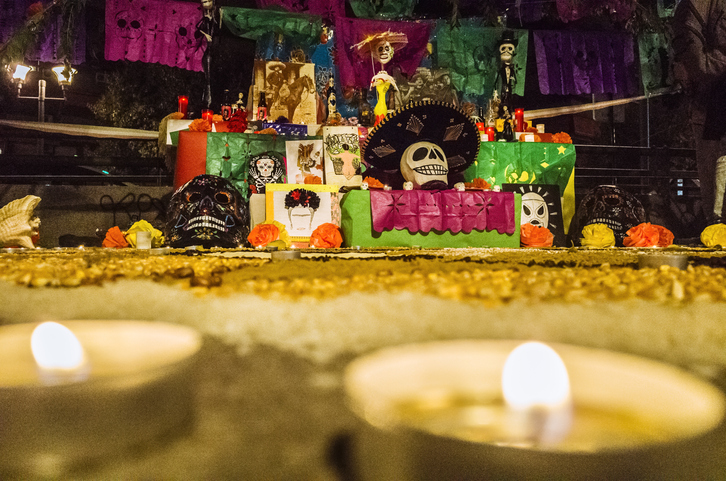Dia de los Muertos That’s The Dead?
How to celebrate the dead in a beautiful way.
 (Getty Images)
(Getty Images)
A lot of Americans think of Dia de los Muerto as just the Halloween version for Mexicans, due to the proximity that the holiday has to Oct. 31. It’s not and that idea is truly insulting.
The holiday is so much more.
Dia de los Muertos is celebrated from Oct. 27 to Nov. 2, in most Mexican households and Mexico. Each day has its own special meaning, such as Oct. 27 being for pets that have passed away and Nov. 1 being for children that have died — many people call this day “Dia De Los Angelitos” or day of the little angels. And there’s no one way to celebrate. Some may set up a picture and water, others go all out on their own and others just do it the crafty way or just traditionally.
The celebration comes from Indigenous roots connected to the Aztecs and mostly from the Mexica people. Día de los Muertos began with celebrations thousands of years ago when Indigenous Mexican people honored the dead and celebrated the cycles of life. It is the most present-day version of these traditions, where those celebrating believe that once a year, the spirits of the dead temporarily journey back to Earth to be reunited with the living. But, most Catholics, believe it or not, who are from Mexico, practice these traditions as they have passed down through generations.
During the duration of the holiday, families start preparing themselves for their deceased loved ones to come visit the altar that is made for them. The traditional altar consists of cempasúchi which are referred to as marigolds and worn as crowns by family and friends. The flowers symbolize the fragility and impermanence of life. Pictures of loved ones are put alongside the person’s favorite food or drink, but many people normally put water to quench their thirst — it’s said to be a long way to our (mortal) world — and pan de muerto. It is believed that our loved ones signal us by the way the candle moves and lights up a bit more that they have arrived. In many altars, especially in households in which children are involved, put Calaveras de Azucar or just normal candy.
I have always been taught about my roots and what traditions have been passed down throughout my family. Both of my parents have tried their best to teach me and my brother about our culture and make sure it’s part of our daily lives. Before Halloween, my mom is the one who starts setting up the ceremonial table with flowers and candles in the early morning. Later in the afternoon, she frames the pictures of our deceased loved ones and lights up the candles. At night, both of my parents start out placing Pan de Muerto, water and snacks/beverages our loved ones liked before departing from the mortal world.
The seed to continue this tradition was planted within me as a child. I feel some sort of emotional connection when participating since I’m inviting my loved ones who aren’t here anymore to rest — even if it’s for a day. If I have a kid one day, I’ll teach them just like my parents taught me about the origins and how to celebrate this holiday.
Ana G. Valdes, (she/her) is an Oakland-based journalist who covers culture and entertainment, films and TV shows.
Edited by Nykeya Woods